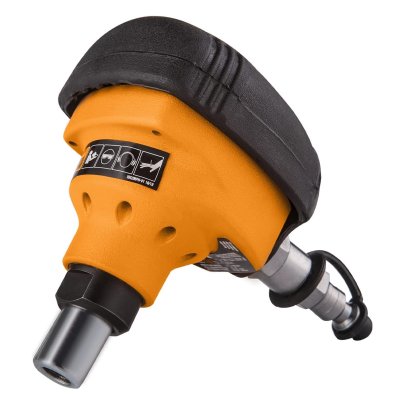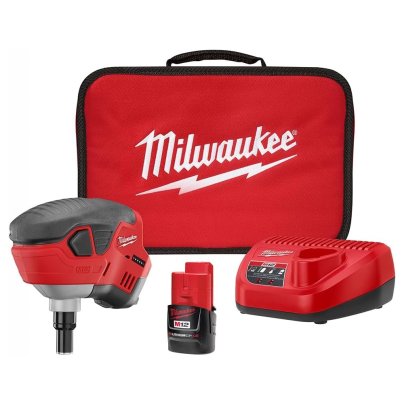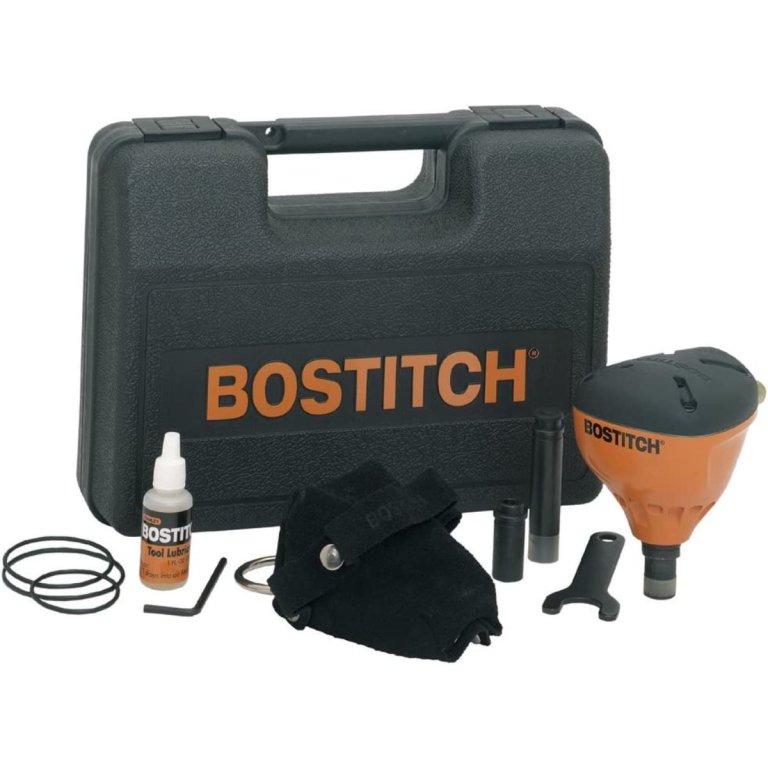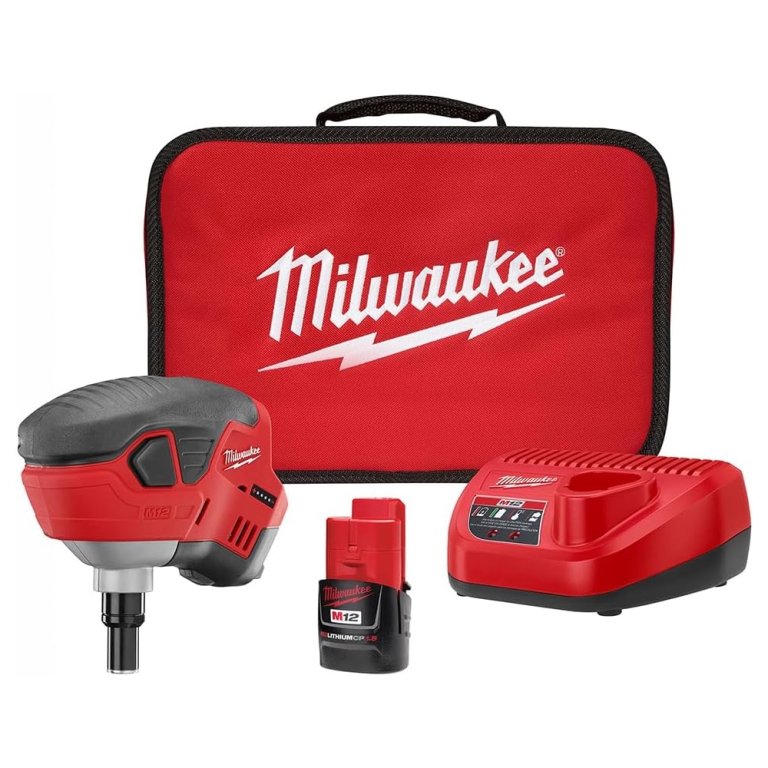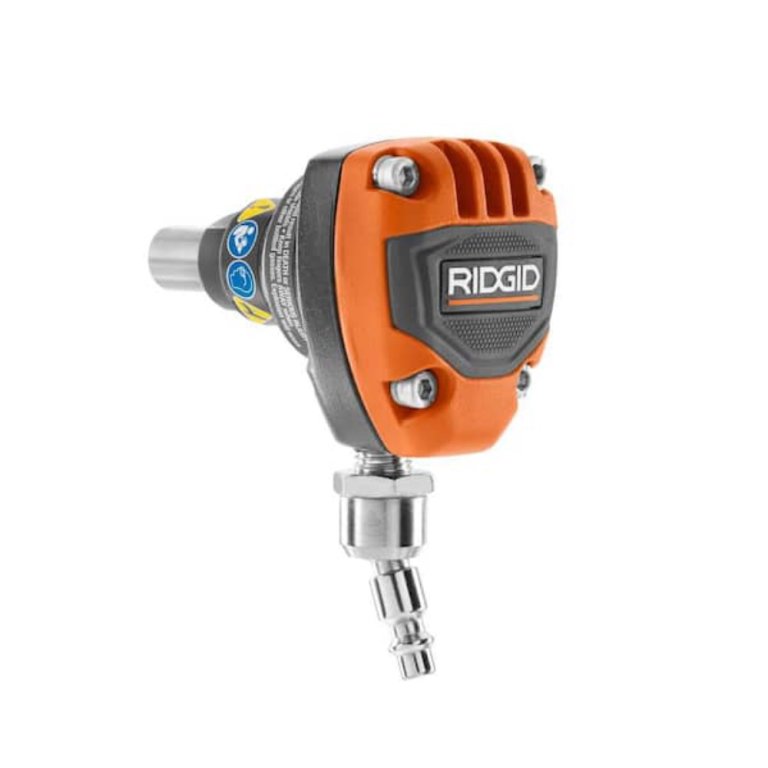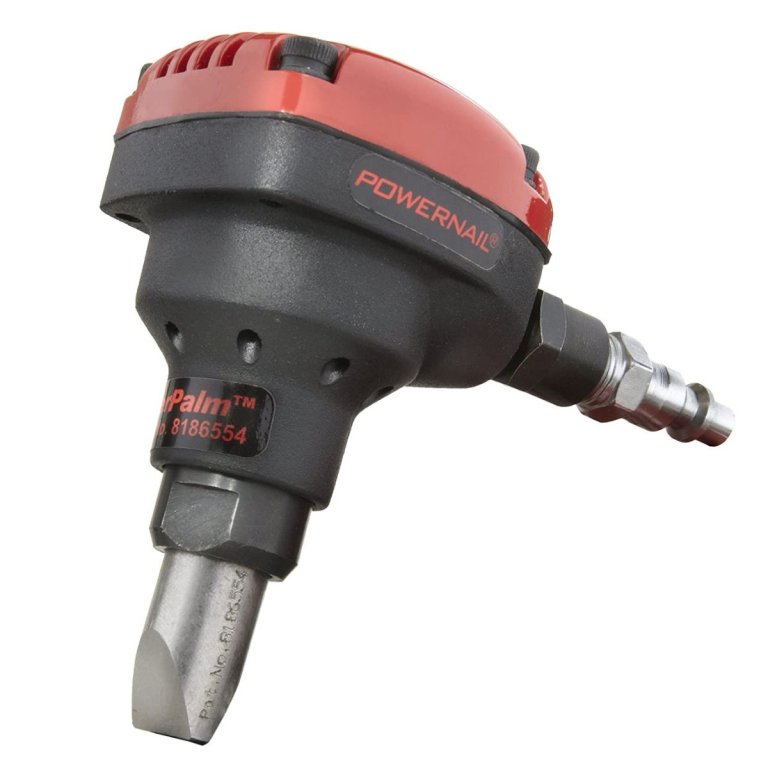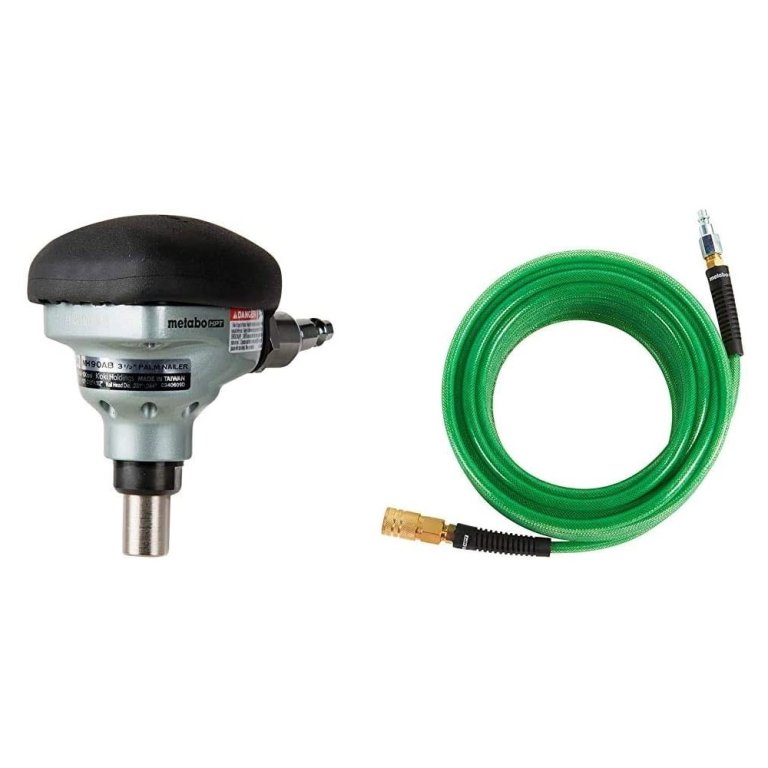
We may earn revenue from the products available on this page and participate in affiliate programs. Learn More ›
Palm nailers are light, compact, and easy to use. Just load a nail, aim, and apply pressure to activate a hammering action that drives the nail home. Palm nailers don’t have the speed of other standard nail guns, but they fit into tight spaces where those big tools can’t reach. We researched over a dozen models and then hand tested the best-selling ones to see how well they performed.
Choosing the right model requires some consideration. Ahead, learn more about this compact tool’s key features and find out why the following models earned a spot in this lineup of the best palm nailers.
- BEST OVERALL: Bostitch Impact Nailer Kit
- BEST BANG FOR THE BUCK: Freeman 2nd Generation Pneumatic Mini Palm Nailer
- BEST BATTERY-POWERED: Milwaukee M12 Cordless Lithium-Ion Palm Nailer Kit
- BEST FOR TIGHT SPOTS: Ridgid Mini Palm Nailer
- BEST FOR HARDWOOD FLOORS: Powernail PowerPalm Hardwood Flooring Nailer
- ALSO CONSIDER: Metabo HPT 3½-Inch Palm Nailer
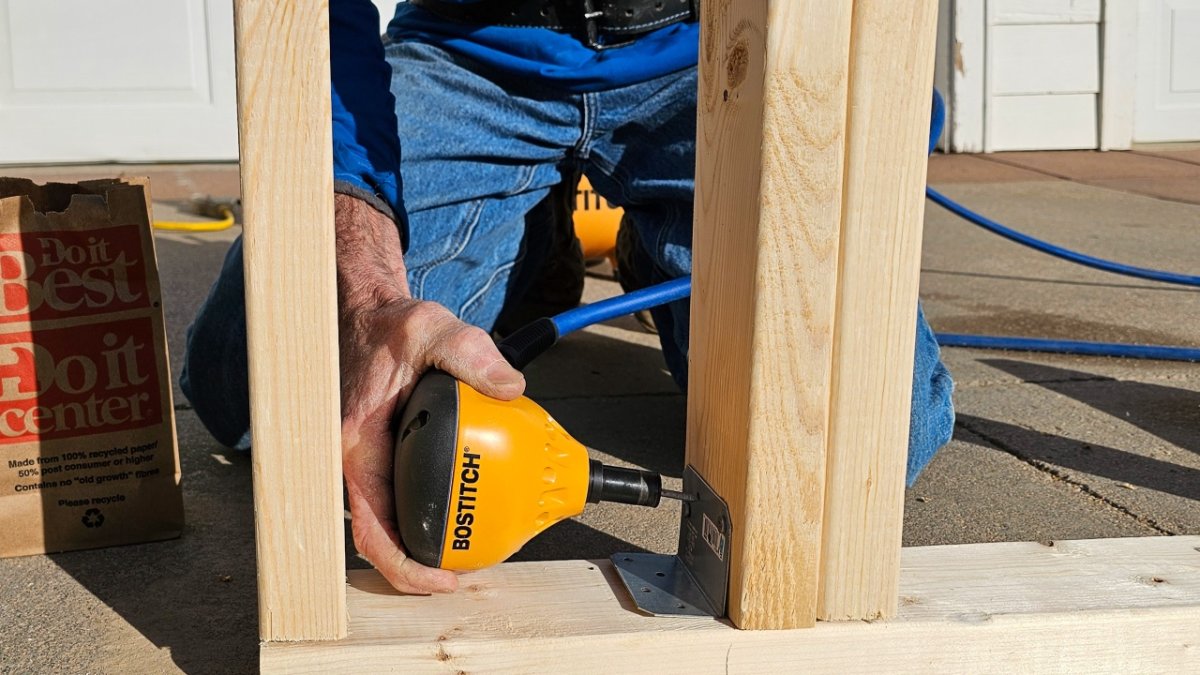
How We Tested the Best Palm Nailers
We researched more than 12 palm nailers and selected six of the highest-rated models for testing. We sought models from top brands, such as Bostitch and Ridgid, but we also considered high-quality models from smaller manufacturers.
Our hands-on tests were straightforward. We used a Bostitch pancake air compressor for testing all the palm nailers, and we set it at 80 pounds per square inch (PSI) to start. If a nailer needed a bit more power, we increased the pressure, but never more than the tool’s top recommended PSI. We made a point of wearing hearing protection.
We drove multiple nails into boards, noting how easy the palm nailers were to use, how powerful they were, and whether they were compact enough to reach in restricted spaces. We looked for magnetic nail noses and noted how much vibration they produced. Each tool received points based on a rubric—the better a palm nailer performed on a test or assessment, the higher the points.
After testing, we averaged the points to determine our top picks and the best categories for each tool.
| Testing Stats | |
| Products tested | 6 |
| Hours spent testing: | 3 |
| Tests performed: | 1 |
| Price range: | $32 to $200 |
Our Top Picks
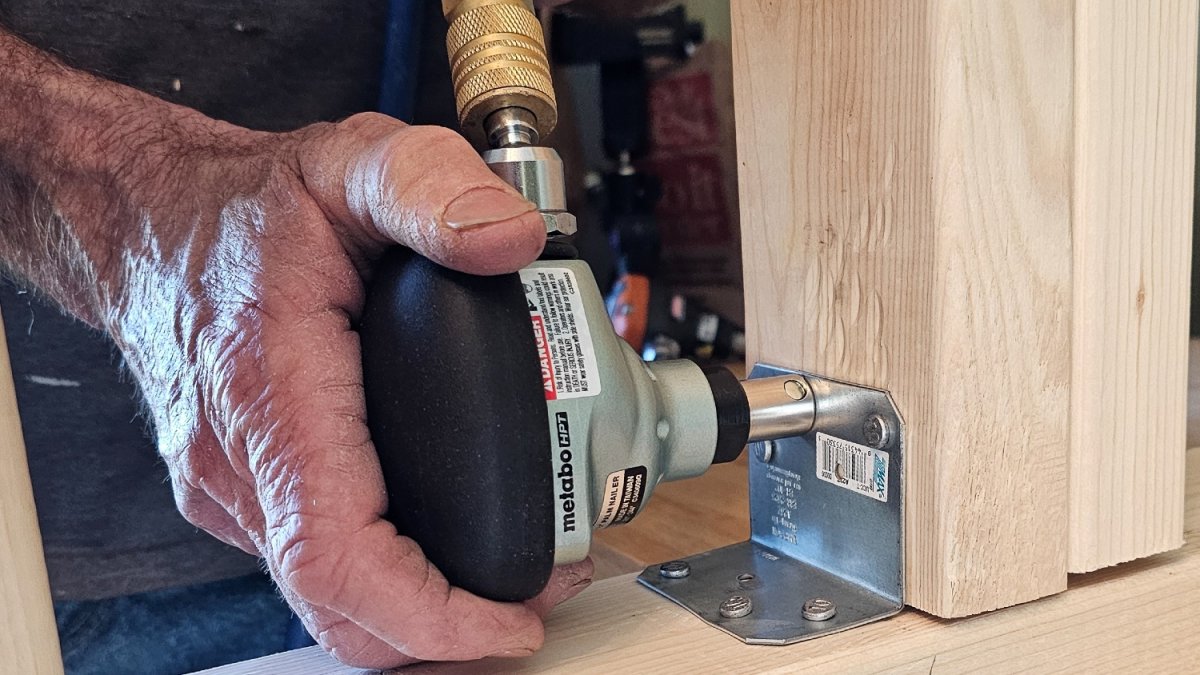
The palm nailers in the following list excelled in our hands-on tests. They vary in terms of type and best use case. One is sure to be a good fit for your project needs.
Best Overall
Bostitch Impact Nailer Kit
What We Like
- Heavy-duty build and performance but still lightweight and easy to maneuver in tight spots
- 3 interchangeable nose pieces add versatility and allow for a broader range of nail sizes
- Magnetic nose helps hold nails for easy positioning before driving
What We Don’t Like
- Kit does not come with the 0.25-inch air fitting that is required to use the palm nailer
Product Specs
- Power source: Pneumatic
- Nail range: 5D to 70D (1¾ to 7 inches)
- Weight: 2.9 pounds
Our Ratings: Ease of Use 4.5/5; Grip 5/5; Vibration 5/5; Performance 4.8/5; Value 4/5
Thanks to three interchangeable nail noses, the Bostitch palm nailer can drive nails from 1.75 to 7 inches (5D to 70D), making it ideal for joist hangers, framing, and heavy-duty fencing.
We tested the Bostitch pneumatic palm nailer while inserting a range of nails, and it performed well with both large and small nails. We drove joist-hanger nails, finish nails, and larger framing nails. As nail size increased, we had to keep a firmer grip on the tool, but it drove each nail until the head was flush with the wood.
At 2.9 pounds, this cordless palm nailer is lightweight enough to nail overhead without causing undue muscle fatigue. It has impressive power, but it doesn’t come with a 0.25-inch air connector, which is necessary for operation. We had to borrow a connector from one of the other models to test this tool.
Read our full review: Bostitch Impact Nailer Kit
Get the Bostitch palm nailer at Amazon.
Best Bang for the Buck
Freeman 2nd Generation Pneumatic Mini Palm Nailer
What We Like
- Rubberized grip reduces tool vibration and prevents hand slippage
- Magnetic tip assists in holding nails during placement
- Compact and affordable air palm nailer for use in restricted spots
What We Don’t Like
- Required (in testing) a higher pressure (95 PSI) to drive framing nails
Product Specs
- Power source: Pneumatic
- Nail range: 6D to 16D (2 to 3.5 inches)
- Weight: 1.38 pounds
This Bob Vila Approved product carries our brand’s highest level of recommendation.

Bob Vila Approved recognizes the household and DIY products that impressed us most in our real-world testing and that exemplify core values of the Bob Vila brand, including craftsmanship, innovation, and value for the dollar. Winners of this designation come recommended by our professional review team and are personally approved by Bob Vila.
Our Ratings: Ease of Use 4.5/5; Grip 5/5; Vibration 4.8/5; Performance 5/5; Value 4.5/5
You don’t have to spend a lot to get the convenience of a compact palm nailer. The Freeman G2MPN mini nail gun is light, powerful, and comfortable enough for long periods of use.
At 1.38 pounds, this nailer was among the lightest models we tested, but it packs a punch. We used the Freeman air palm nailer to drive joist hanger nails and framing nails. We appreciated its rubber overmold, which reduced vibration and allowed us to keep a firm grip. For driving framing nails, the tool worked best when we adjusted our compressor to 95 PSI. We were able to drive smaller nails at 80 PSI.
The magnetic tip is great for holding the nails, and this model comes with a 0.25-inch connector, so it’s ready to connect to an air compressor. Best of all, it comes at an affordable price point.
Get the Freeman palm nailer at Amazon, Lowe’s, The Home Depot, or Walmart.
Best Battery-Powered
Milwaukee M12 Cordless Lithium-Ion Palm Nailer Kit
What We Like
- Powerful electric palm nailer for inserting fasteners in restricted spots
- Battery and charger included, so there’s nothing else to purchase
- LED work light illuminates dark corners for more precise nailing
What We Don’t Like
- Slightly larger and heavier than pneumatic models but still compact enough to reach in tight spots
Product Specs
- Power source: 12-volt rechargeable battery
- Nail range: 6D to 16D (2 to 3.5 inches)
- Weight: 3.4 pounds
Our Ratings: Ease of Use 4.5/5; Grip 4/5; Vibration 4.5/5; Performance 5/5; Value 4.3/5
Those looking for a truly portable hand nailer need look no further than the Milwaukee palm nailer, which can be used where there’s no outlet to plug in a compressor. This was the first time we’d used a nonpneumatic palm gun, and we were impressed. The Milwaukee 2458-21 drives 6D to 16D (2 to 3.5 inches), and the tip is magnetic.
We drove dozens of nails with this battery palm nailer, and we enjoyed not having to drag an air hose behind us. It performed very well in testing, driving nails until their heads were flush with the wood. It runs on a 12-volt battery that still had ample charge even after we’d inserted roughly 60 nails.
At 3.4 pounds, the Milwaukee electric palm nailer is slightly heavier than some, though its slender body makes it simple to grasp. We liked its LED work light and battery-level indicator. A battery, charger, hand strap, and tool bag are included.
Get the Milwaukee palm nailer at The Home Depot or Fastenal.
Best for Tight Spots
Ridgid Mini Palm Nailer
What We Like
- Very lightweight at just 1 pound, making it easy to use in the tightest spots
- Well built and suitable for driving joist-hanging nails and occasional framing nails
- Offers access to tiny spots that commonly pose construction challenges
What We Don’t Like
- Small size makes it challenging to get a good grip when driving larger framing nails
Product Specs
- Power source: Pneumatic
- Nail range: 4D to 16D (1.25 to 3.5 inches)
- Weight: 1 pound
Our Ratings: Ease of Use 5/5; Grip 4/5; Vibration 4.5/5; Performance 5/5; Value 4.8/5
The Ridgid palm nailer lives up to its reputation as a truly mini palm nailer. It weighs just 1 pound and was small enough to hold with our thumb and fingers rather than our entire palm. This presented both an upside and a downside.
On the one hand, this tiny nail pounder will fit into the slimmest of spots where larger models might not. However, being so small, getting a good grip for repeatedly driving framing nails was challenging. We pulled it off, but it felt like our hands were too big for the tool.
That said, we really liked this little pneumatic hand nailer because it gave us access to the smallest spaces—areas that commonly give builders headaches. This is a well-built little pneumatic palm hammer that’s perfect for driving joist-hanging nails and the occasional framing nail, as well as for reaching where larger palm nailers might not fit.
Get the Ridgid palm nailer at The Home Depot.
Best for Hardwood Floors
Powernail Power Palm Hardwood Flooring Nailer
What We Like
- Drives L-type cleats for installing hardwood flooring in tight spots
- Magnetic tip holds cleats securely for precise positioning when nailing
- Lightweight and compact, yet powerful enough to drive cleats flush with flooring tongue
What We Don’t Like
- Expensive compared to other pneumatic palm nailers, but this is a specialty model
Product Specs
- Power source: Pneumatic
- Nail range: 16 gauge and 18 gauge cleats (1 to 2 inches)
- Weight: 1 pound
Our Ratings: Ease of Use 5/5; Grip 4.5/5; Vibration 4.5/5; Performance 5/5; Value 4.8/5
The Powernail Power Palm nailer is designed specifically to address installing flooring planks along walls and in height-restricted spots, such as under a cabinet’s toe kick.
We tested this model on hardwood planks using L-type cleats. It hammered the cleats in without a problem—it’s very powerful—but it takes some getting used to. Very slight pressure on the nailing nose sets off the hammering action. We had to be careful when positioning the nailer so it didn’t start nailing prematurely. It’s a good idea to familiarize yourself with this nailer on scrap wood before nailing real planks.
The tip is magnetic, and we liked the way it rotated so we could align it precisely. It excelled at 80 PSI. But it’s on the pricey side, and it’s a single-purpose tool—it won’t drive regular nails. Still, if you’re a flooring pro, this little palm nailer will be very handy.
Get the Powernail palm nailer on Amazon, The Home Depot, or Powernail.
Also Consider
Metabo HPT 3½-Inch Palm Nailer
What We Like
- Palm nailer comes with a 50-foot air hose with a quick-connect attachment
- 360-degree swivel connector makes it easier to position the nailer
- Magnetic tip holds nails in place while positioning the tool
What We Don’t Like
- Features a smaller nail range than many other models
Product Specs
- Power source: Pneumatic
- Nail range: 8D to 16D (2.5 to 3.5 inches)
- Weight: 1.3 pounds
Our Ratings: Ease of Use 4.5/5; Grip 5/5; Vibration 4/5; Performance 4.3/5; Value 4/5
The swivel hose connector on the Metabo HPT makes it easy to position the nailer right where we wanted it, without having to adjust the air hose to get it out of the way. Like several of the other pneumatic models we tested, the Metabo could drive nails successfully at 80 PSI.
It weighs just 1.3 pounds. The Metabo has a magnetic tip, but it was a little wimpy—the magnet wasn’t always strong enough to hold the nails in place. Sometimes, they fell out before we could position the nailer. We ended up having to support several of the nails with our fingers.
This nailer accepts a smaller range of nail sizes than some—8D to 16D (2.5 to 3.5 inches). It’s not well-suited for nails at the shorter end of the scale. Still, if you’re framing with a standard pneumatic nailer and you run into a tight spot, you can quickly attach the Metabo palm nailer, drive the nails, and then switch back to your other nailer without spending a lot of time.
Get the Metabo HPT palm nailer at Amazon, Walmart (nailer only), or Menards (nailer only).
Jump to Our Top Picks
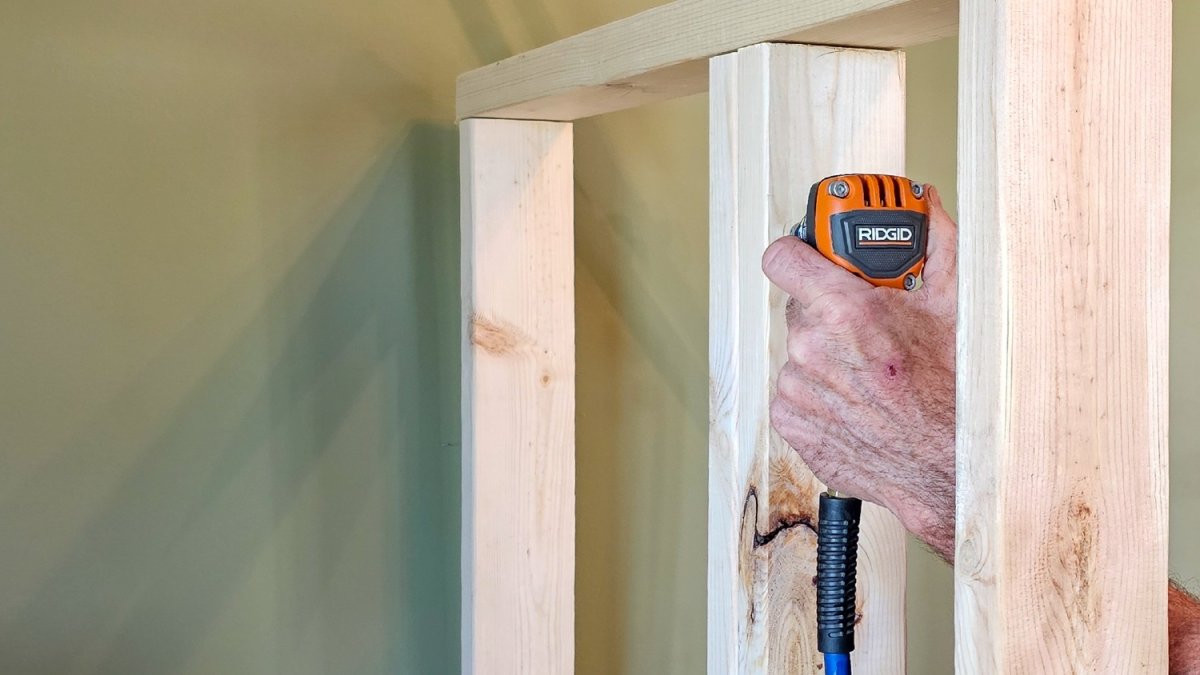
What to Consider When Choosing a Palm Nailer
Palm nailers load just one nail at a time. They drive it using a hammering action that is activated by pressing on the tool. The action makes palm nailers quite loud, although they’re not among the loudest power tools. You can pair them with a quiet air compressor to reduce some of the chaos. The following key features differentiate the many models available. They’re not meant to drive nails for hanging pictures, but if you need to nail in a restricted space, they may be just the ticket.
Power Source
Most palm nailers are pneumatic, requiring an air compressor to drive them. The nailers we tested typically required a minimum of 80 PSI, although some needed more pressure to drive larger nails.
Cordless palm nailers (battery-powered) are relatively new to the market. With no need for an air hose, a battery palm nailer offers greater freedom of movement. However, the battery does make them heavier and bulkier. Plus, there’s the issue of the battery running down, so you may want to purchase a second battery to use one while the other is charging.
Grip
The main body of the palm nailer is usually made from aluminum. While it’s typically easy to grip, some higher-quality models have a rubberized shell covering the back. This makes them easier to hold and helps absorb some of the vibrations of the hammer action, reducing hand fatigue.
A few palm nailers attempt to improve the grip further by including a “glove” or hand strap. The tool drops into it, and it’s secured around the back of the hand with a hook-and-loop strap. This reduces the effort needed to grip the palm nailer, though some find the strap uncomfortable. The strap isn’t a permanent attachment and is very much a matter of personal preference.

Size and Weight
Palm nailers are generally very compact tools, but they do vary in size. Those with small or large hands can benefit from checking the tool’s physical dimensions before purchasing. For example, a compact—but not super-mini nailer—may be better for someone with small hands, while a slightly larger one may be easier to control for someone with bigger hands.
An aluminum body helps keep weight down, but palm nailers can still weigh more than 3 pounds. User fatigue isn’t just based on the tool’s weight; the hammer action’s impact is also a factor. A heavier tool tends to create a stronger hammering action, which can lead to increased hand fatigue.
Nail Types and Additional Features
Although palm nailers are simple tools, different models accept various types of nails, and some offer a few key variations and features that are worth considering:
- Most palm nailers drive round-head nails, also called penny nails. These are typically between 6D (2 inches long) and 16D (4 inches long), though heavy-duty palm nailers can drive larger nails. Tool abilities do vary, so it’s important to check the product specifications.
- Flooring palm nailers only drive flooring cleats, not standard nails.
- Depth adjustment is not a common feature of palm nailers.
- Pneumatic tools need regular lubrication, and some manufacturers include a small bottle of oil. As a general rule, adding 2 or 3 drops of oil each time before use will keep the tool nicely lubricated.
FAQs
So far, we have looked at important technical issues that can affect your choice of palm nailer, but we haven’t addressed how to use a palm nailer. If you’re still asking how a palm nailer works, or have additional questions, you may find the answers below.
Slip a single nail into the nailer’s nose, which is usually magnetic. Then, position the tip of the nail where you want to drive it and press firmly—the tool’s hammering action will kick in and drive the nail.
Driving nails into tight spaces is exactly what palm nailers are designed to do. They are shorter from front to back than standard nail guns and are often easier to maneuver, too.
Most of these tools are very compact. The mini versions are typically considered woodworking tools due to their ability to drive small finish nails.
Palm nailers generally use round-head, or penny, nails. Many palm nailers will drive framing nails, but don’t expect one to replace the need for a framing nailer if you’re building a sizable structure.
Yes, you can. Several palm nailers can be used for roofing, including the Bostitch palm nailer in our Top Picks list. Professional roofers often use coil nail guns (often also considered the best siding nailers).
Meet the Tester
Glenda Taylor is a product tester and writer specializing in the construction, remodeling, and real estate industries.
Additional research provided by Bob Beacham.

